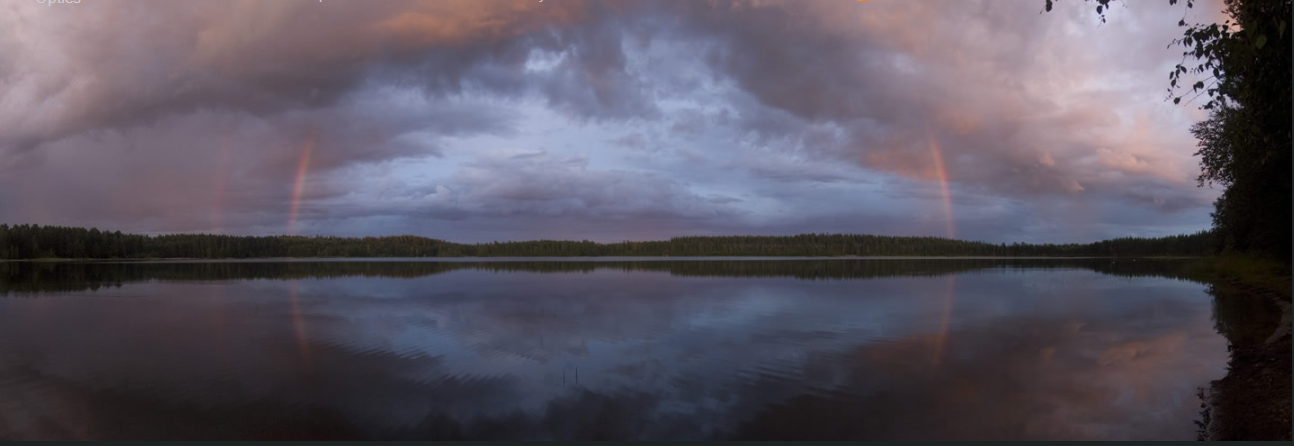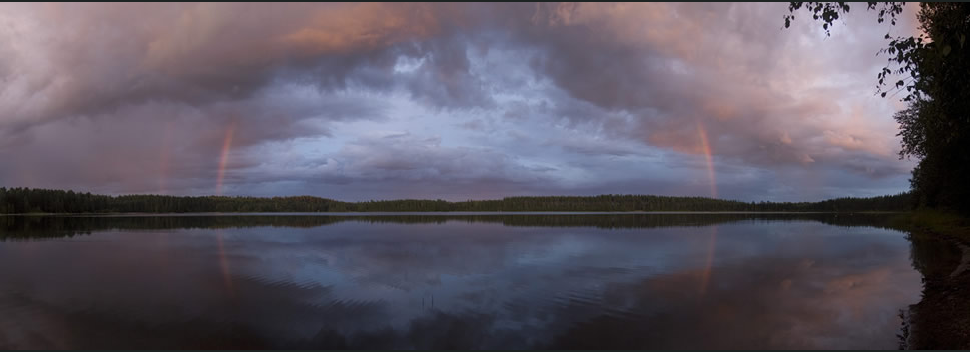Evening Rainbows
Evening Rainbows: A Spectacular Display of Nature's Beauty
Evening rainbows are a captivating and enchanting sight that occurs when the setting sun interacts with raindrops in the atmosphere. While rainbows are commonly associated with daytime showers, evening rainbows offer a unique and magical experience for those fortunate enough to witness them. In this article, we will delve into the intricacies of evening rainbows, exploring their formation, characteristics, and the scientific phenomena that contribute to their stunning appearance.
The Formation of Evening Rainbows
Rainbows form when sunlight is refracted, or bent, as it enters a raindrop, then reflected off the inside surface of the droplet, and finally refracted again as it exits the droplet. The bending and reflection of light within the raindrop cause it to disperse into its component colors, creating a beautiful arc of colors in the sky. In the case of evening rainbows, this phenomenon occurs as the setting sun's rays pass through raindrops suspended in the atmosphere.
Characteristics of Evening Rainbows
Evening rainbows share many similarities with their daytime counterparts, but they possess unique characteristics that make them a truly remarkable spectacle. Here are some distinguishing features of evening rainbows:
-
Lower Arc: Evening rainbows tend to appear lower on the horizon compared to daytime rainbows. This lower position is a result of the sun's position during the evening hours, casting its rays at a shallower angle through the raindrops.
-
Vibrant Colors: Due to the lower position of the sun, evening rainbows often exhibit more vivid and saturated colors. The warm golden light of the setting sun illuminates the raindrops, intensifying the hues of the rainbow.
-
Double Rainbow: On rare occasions, evening rainbows may be accompanied by a second, fainter rainbow known as a secondary rainbow. The secondary rainbow forms due to additional reflections and refractions within the raindrops, resulting in a distinct outer arc.
The Magic of Evening Rainbows
The appearance of an evening rainbow is truly a magical experience, evoking a sense of wonder and awe. Here are some factors that contribute to the enchanting nature of evening rainbows:
-
Atmospheric Conditions: Evening rainbows are more likely to occur when there are scattered rain showers or drizzle in the vicinity. The presence of moisture in the air provides the necessary conditions for the formation of raindrops, which are essential for creating rainbows.
-
Golden Hour Glow: The soft, warm light of the setting sun bathes the landscape in a golden glow, adding an ethereal quality to the rainbow. The combination of the vibrant colors of the rainbow and the gentle hues of the evening sky creates a captivating visual display.
-
Serene Atmosphere: Evening rainbows often occur during calm and tranquil evenings, enhancing the overall serenity of the scene. The peaceful ambiance, coupled with the breathtaking beauty of the rainbow, creates a moment of tranquility and appreciation for nature's wonders.
Capturing the Beauty: Evening Rainbow Photography
Photographing evening rainbows can be a rewarding and challenging endeavor. To capture the essence and beauty of these natural wonders, consider the following tips:
-
Choose Your Location: Find a vantage point that offers an unobstructed view of the horizon where the rainbow is expected to appear. Consider scenic locations such as open fields, hillsides, or bodies of water to add depth and interest to your photographs.
-
Timing is Key: Plan your photography session during the golden hour—the period shortly before sunset—when the light is soft and warm. This will enhance the colors and create a harmonious blend between the rainbow and its surroundings.
-
Composition: Experiment with different compositions to create visually compelling images. Consider including elements such as trees, buildings, or people to provide scale and context to the rainbow.
-
Capture the Moment: Be patient and ready to capture the rainbow as soon as it appears. Rainbows can be fleeting, so having your camera settings prepared and being in the right place at the right time is crucial.
Conclusion
Evening rainbows are a testament to the beauty and complexity of nature. Their formation, unique characteristics, and the magical atmosphere they create make them a truly awe-inspiring sight. Whether you witness an evening rainbow firsthand or capture its splendor through photography, these fleeting moments of natural wonder are sure to leave a lasting impression. So, keep an eye on the horizon during those twilight hours and embrace the enchantment of evening rainbows.

Evening Rainbows, Finland - By Marko Riikonen (site) August 14, 2009. �Marko Riikonen, shown with permission.
Primary and secondary rainbows cast by the setting sun at the end of an epic day that started at 03.30 and in which Marko exceptionally captured a very rare reflection glory and later on a waterborne dewbow.

Note: this article has been automatically converted from the old site and may not appear as intended. You can find the original article here.
Reference Atmospheric Optics
If you use any of the definitions, information, or data presented on Atmospheric Optics, please copy the link or reference below to properly credit us as the reference source. Thank you!
-
<a href="https://atoptics.co.uk/blog/evening-rainbows/">Evening Rainbows</a>
-
"Evening Rainbows". Atmospheric Optics. Accessed on November 26, 2024. https://atoptics.co.uk/blog/evening-rainbows/.
-
"Evening Rainbows". Atmospheric Optics, https://atoptics.co.uk/blog/evening-rainbows/. Accessed 26 November, 2024
-
Evening Rainbows. Atmospheric Optics. Retrieved from https://atoptics.co.uk/blog/evening-rainbows/.